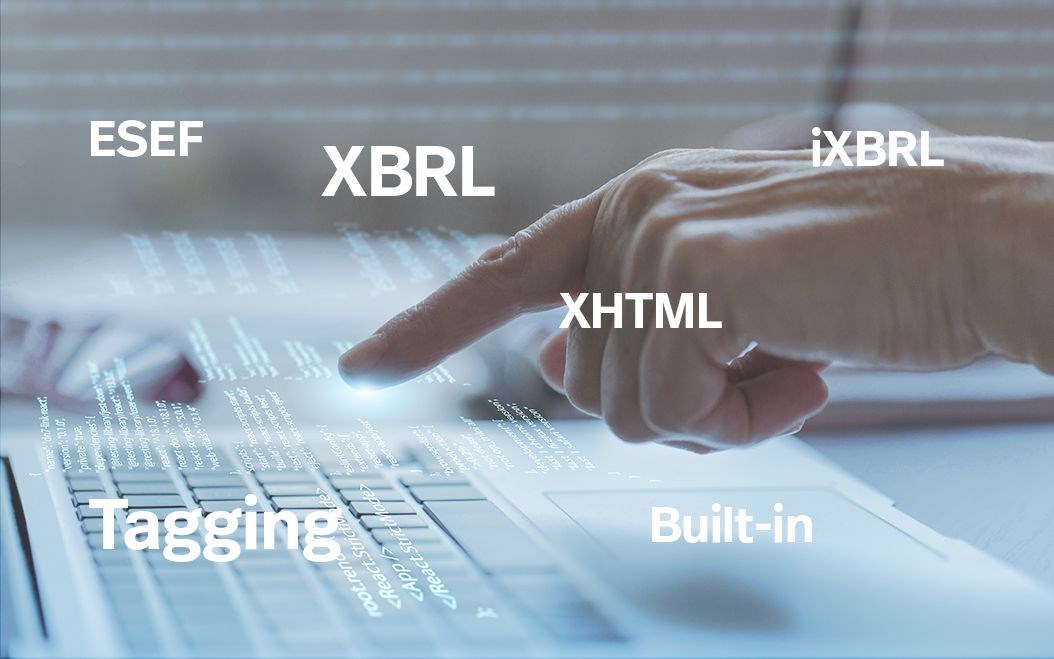January 21, 2025
ESMA Consultation Digitization of sustainability and financial reporting
With its proposals to extend the European Single Electronic Format (ESEF) to sustainability reporting (ESRS and Article 8 EU Taxonomy), ESMA (European Securities and Markets Authority) is targeting two points.
Firstly, sustainability disclosures are to be integrated into ESEF in accordance with the CSRD, i.e. sustainability reports are to be marked with XBRL tags. Secondly, the usability of existing digital financial reports is to be improved by simplifying and expanding the digitalization of financial reporting processes. The consultation is open until March 31, 2025.
Equating non-financial and financial reporting
The phased implementation plan for the European Sustainability Reporting Standards (ESRS) aims to ensure alignment with existing accounting standards and underlines the ambition to bring non-financial reporting on a par with financial reporting. At its core, the initiative focuses on the inclusion of sustainability disclosures in machine-readable iXBRL, which will improve both the accessibility and comparability of financial and ESG data.
Added value for information recipients
In addition, the resulting data should be accessible in due course via the European Single Access Point (ESAP), centralizing the information for investors and analysts. By prescribing structured, machine-readable formats, ESMA aims to streamline reporting while creating significant added value for stakeholders. High-quality, accessible and above all digital disclosures will ensure compliance, support comparability, enable informed decision-making and facilitate advanced analytics.
Thus the vision
But what does it take? Currently, a large company spends thousands of working hours compiling and preparing everything that is required for an annual report and finally publishing it in the desired channels. This is already the case today - before the mandatory introduction of sustainability reports in corporate reporting. On top there is additional work involved in tagging the information for the ESEF requirements. However, once the deep embedding of tagging is implemented in the system-based reporting process, so-called built-in tagging, companies will benefit from the fact that their reports can be easily used by progressive investors, regulators, policy makers and other stakeholders. So, the EU's vision with its Green Deal claim comes into play: the implementation of digitized disclosure is in the public interest and also in the interest of healthy, growing and competitive markets in Europe.
Improvements in financial reporting
With regard to financial reporting, ESMA's consultation proposes improvements to the tagging of IFRS consolidated financial statements and the notes to the consolidated financial statements as well as technical amendments to the regulatory standards for the European Single Access Portal (ESAP). Specifically, this means simplified new mandatory disclosures and a simplification of tagging in the notes as well as the abolition of multiple tagging. In a second phase ESMA proposes detailed tagging of all figures in the notes.
Schedule
A three-phase introduction over six years is envisaged. The start is planned for either 2026 or 2027, depending on the publication date in the EU Official Journal. Large non-PIE companies will start one year later in each case. Full implementation is targeted by 2030/2031.
›Phase 1 (years 1-2): Focus on ESRS 2 and E1 (climate aspects), basic numerical data from other standards or subject areas
›Phase 2 (years 3-4): Expansion to include semi-narrative data, detailed tagging of text elements
›Phase 3 (years 5-6): Complete tagging of all disclosures, integration of company-specific extensions
The Article 8 disclosures from the EU taxonomy should be fully tagged from the beginning. With regard to SMEs and non-EU companies with EU subsidiaries, it is proposed that the former can participate voluntarily and the latter must report, but not in XBRL format.
Tried and tested
The platforms ns.publish and ns.wow with the built-in module ‘tagging plus‘

tagging plus
The module for machine readability (XBRL): a built-in solution. Without platform disruption, from one data source
('single source of truth'). Requires no upstream or downstream manual intervention by external specialists. Suitable for financial information (ESEF with notes), non-financial information (ESRS) and all report content. Secure. Certified.
have been used for years by numerous listed companies to implement their financial reporting with ESEF. Just like in the sustainability report for GRI or test ESRS implementations. Want to find out more? Olivier Neidhart or Daniel Schön will be happy to answer your questions.
